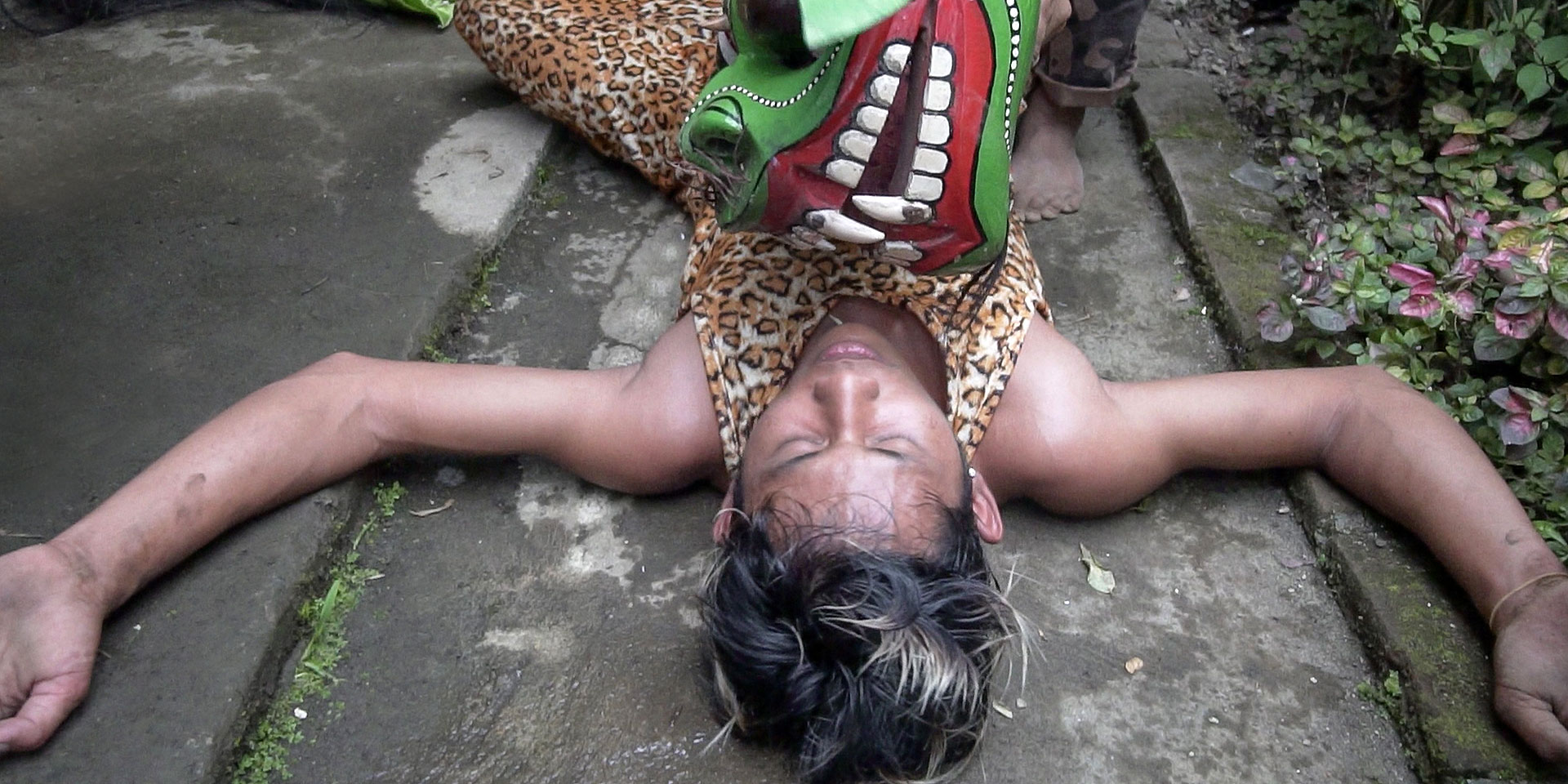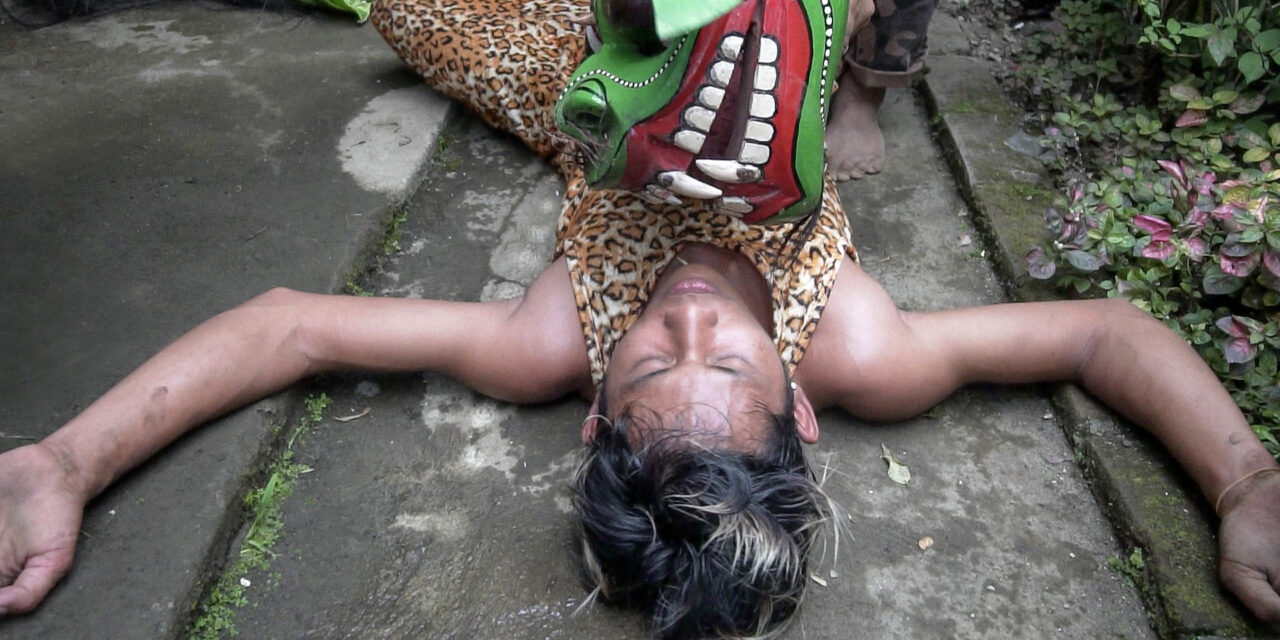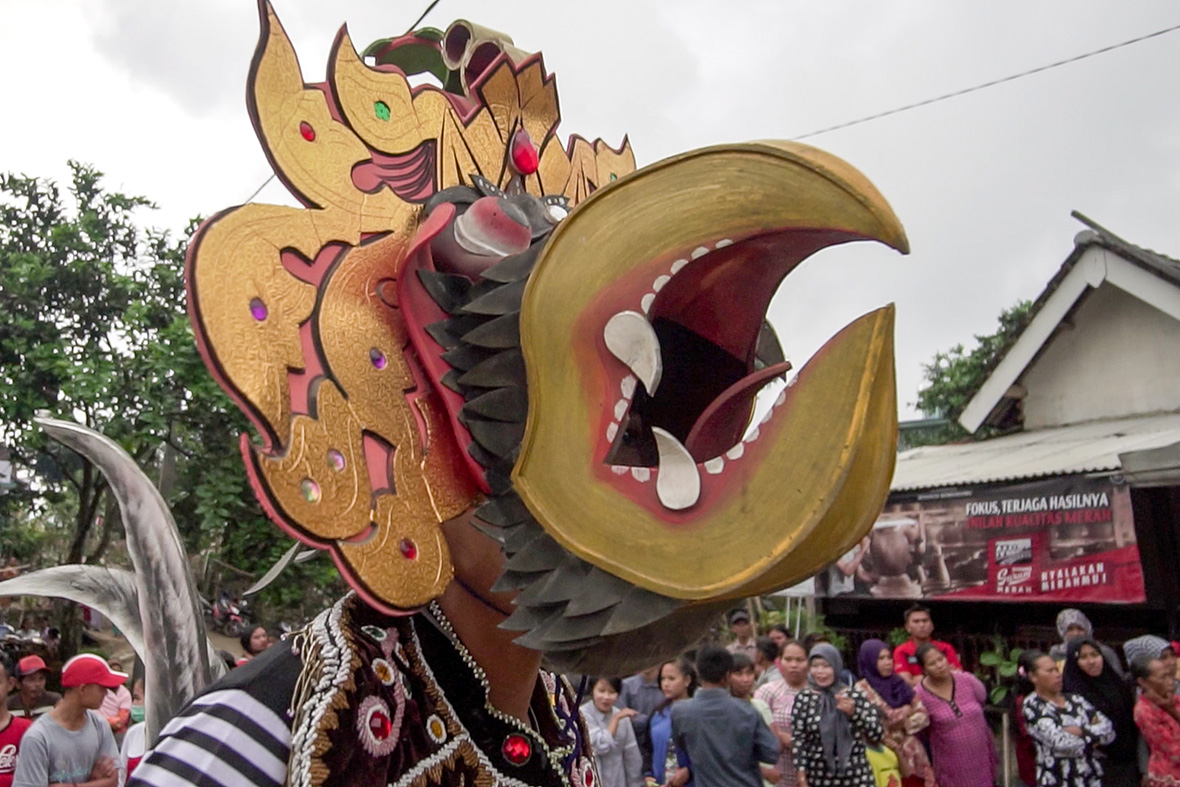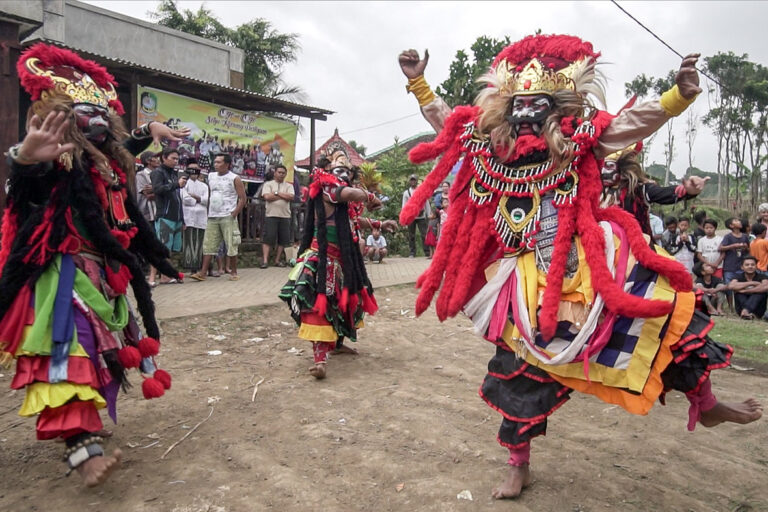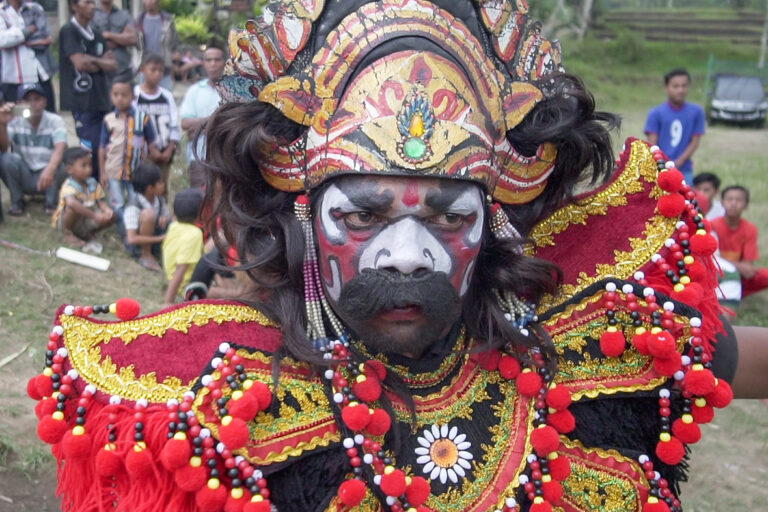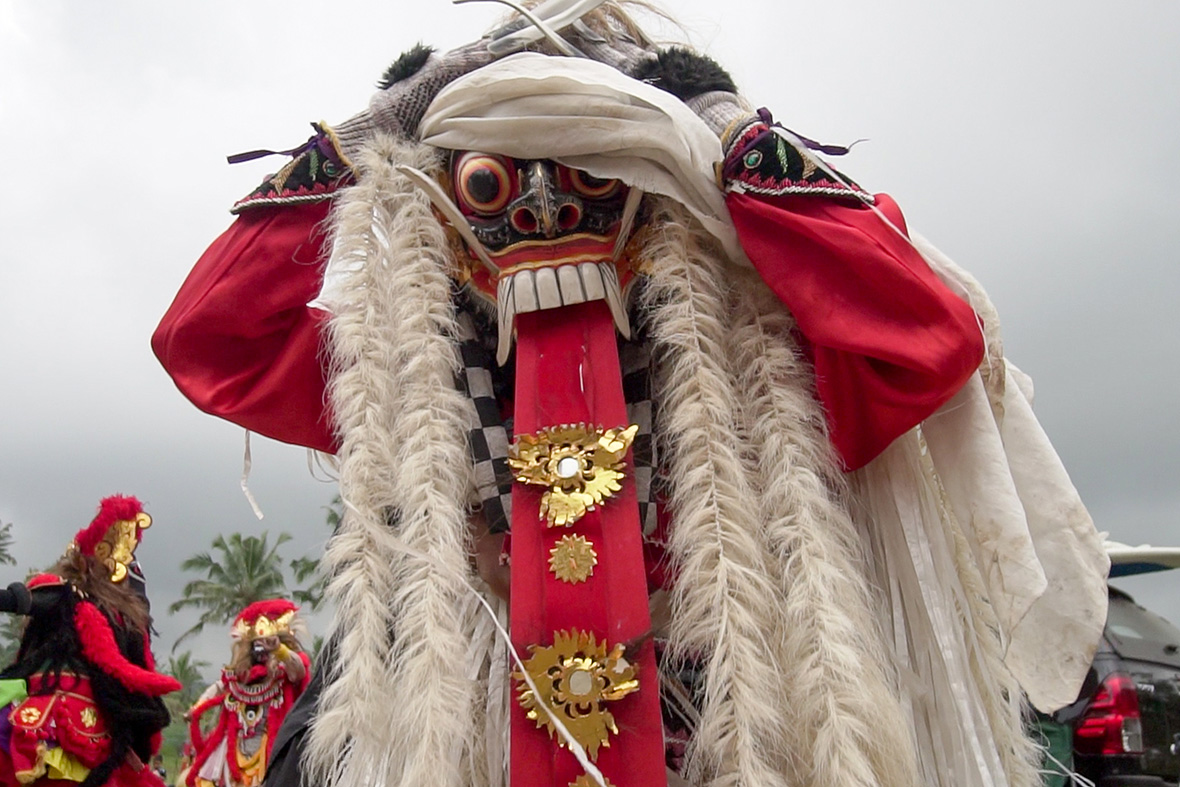“The men feel nothing when the dance is over,” says Sarwo Edi, spiritual Jaranan practitioner. “They don’t even realize what they have done. No injuries or illnesses appear.”
West Java calls it Kuda Lumping. In Central Java it’s Jatilan. To East Java it’s Jaranan. In this part of East Java, just off of Ijen – a volcano spewing blue fire and sulfur – the Jaranan is an intense ritual of spiritual passion and trance-induced savagery. To film this practice with such intimate access is a truly unique opportunity.
Returning only a short time from the otherworldly sights of Ijen, there was yet another planet waiting at a little village near the Ijen Resort and Villas.
On arrival, the ritual had been arranged. The entire village had come to watch the spectacle. On one side, the band prepared to play, on the other, spectators had come to watch. Sarwo Edi was a spiritual practitioner at the event, responsible for putting the dancers into and taking them out of their trances.
“The practitioner still has to do rituals and meditation every Malam Jum’at Legi,” Sarwo Edi says. “They have to put offerings – seven colored flowers, cups of sweet and bitter coffee, small traditional market cakes – next to […] where they usually […] perform.”
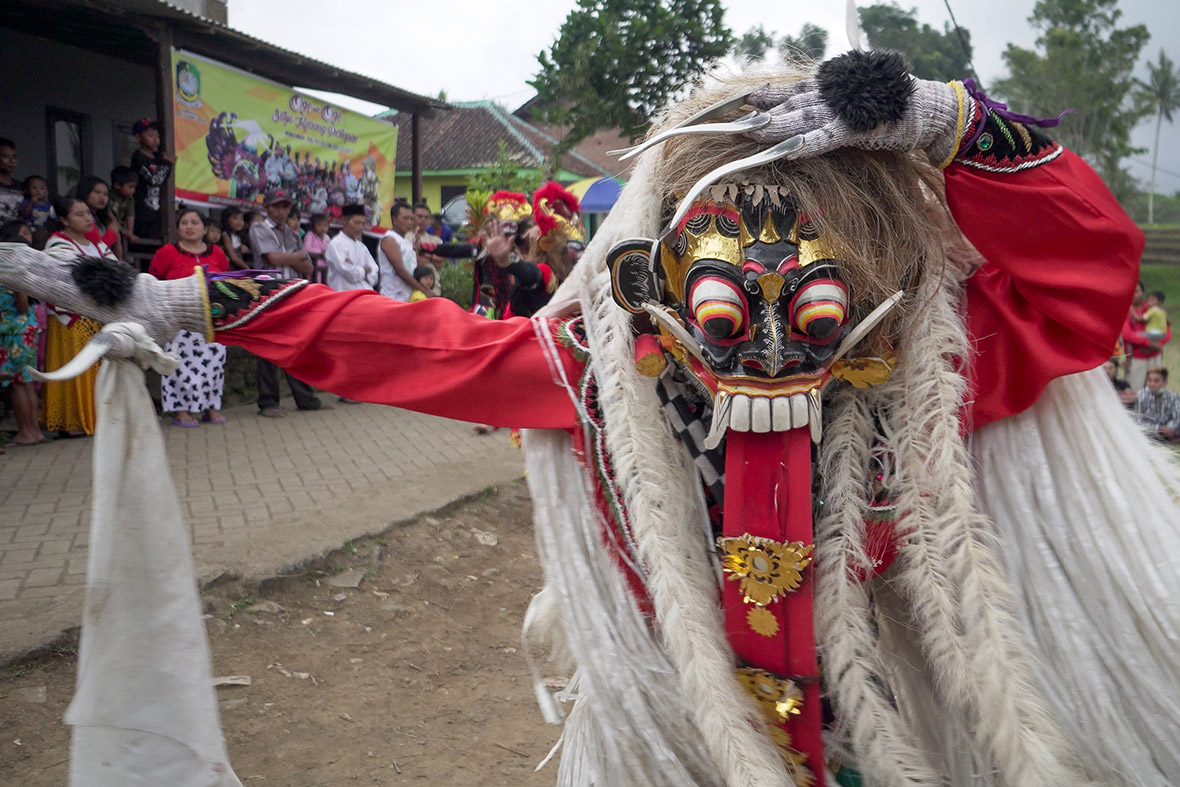
ABOVE: Jaranan dancer in regalia and barong mask.
Before the ceremony, the practitioner checks the offerings carefully. He says that if they are not correct the dancers will take a long time to become entranced or it will be difficult to revive them. Sarwo Edi states that the practitioners must choose an auspicious day to fix the instruments and barong masks that have seen wear and tear, claiming that he and family members will feel ill if this is done carelessly.
ABOVE: With the help of practitioners, Jaranan dancers enter their trance.
At the start of the ceremony, dancers in large barong masks and ornate makeup and headdresses dance throughout the semi-circle formed by the gamelan instruments and the audience. This was a private ceremony, enabling up-close, intimate filming.
There is little choreography. In the Jaranan trance dance, the spirit leads the dancer. This “horse dance” as it is often known allows the participants to take on animal traits. During the dance the “horses” will allow themselves to be whipped – the loud, cinematic cracks of the whip ringing out over the crowd. After the whipping, the horses go on about their dancing.
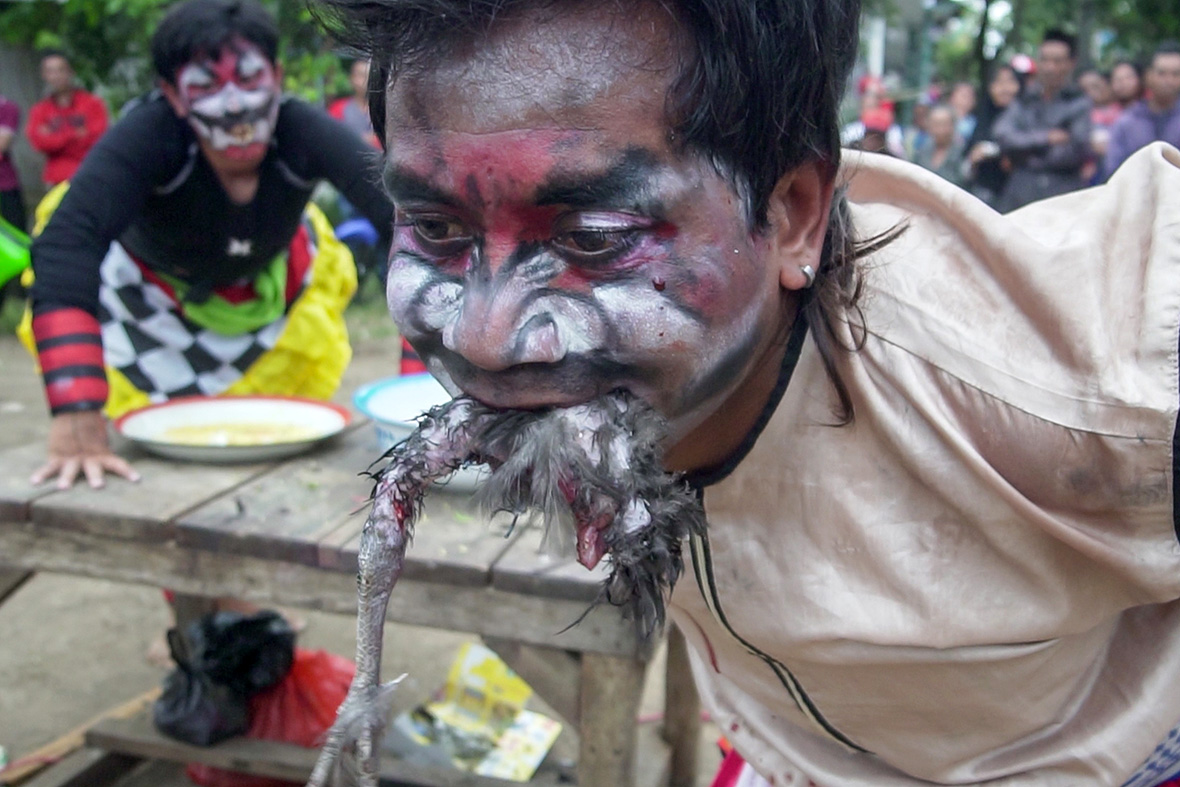
ABOVE: Jaranan dancer eating a freshly killed chicken.
Soon, the dance becomes a possession. The practitioners massage and prod the dancers as they fall more deeply into their spiritual state. The music beats out their transformation. The dancers, once deliberate and careful in their movements, become crazed.
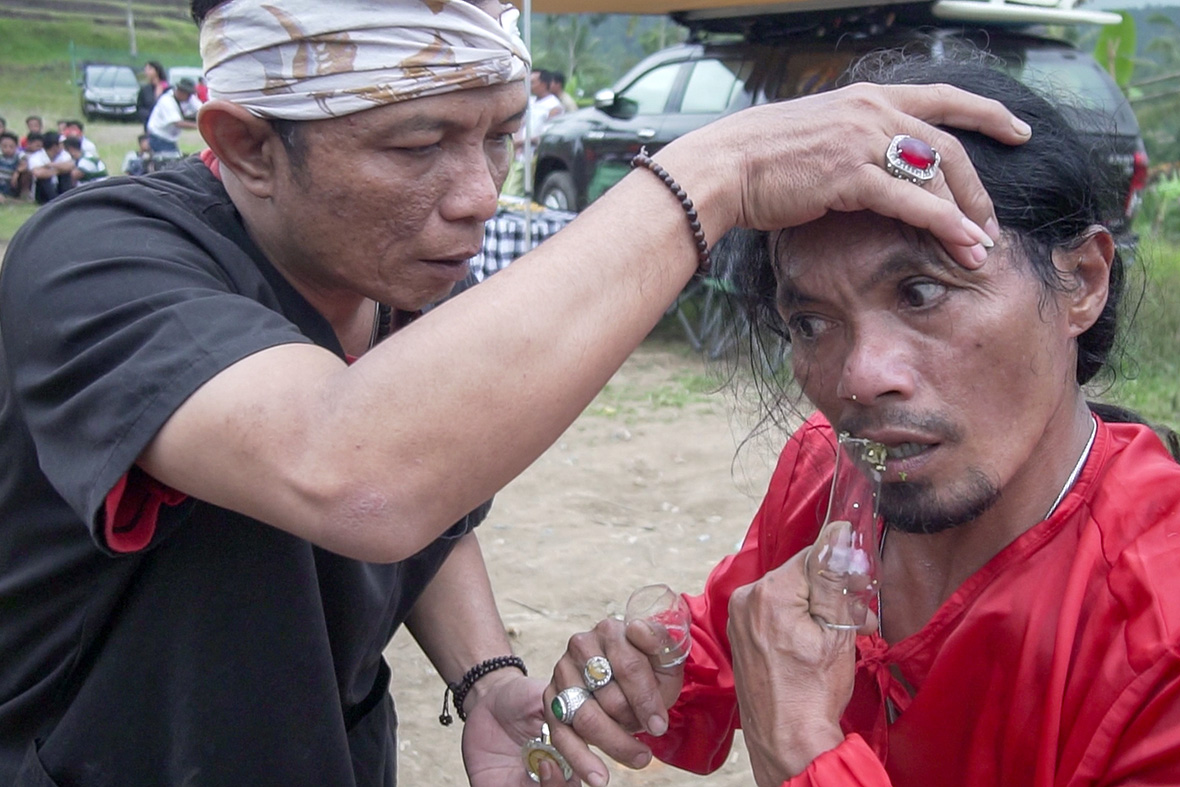
ABOVE: A dancer eats glass while being seen to by a practitioner.
The animal behavior becomes ever more intense. The dancers chew glass from bottles. Raw chicken parts with the feathers still on the bird hang from the mouth of wide-eyed dancers. They dart, and dance, and snarl.
The attitude of the crowd was reverent but careful. In the circle with the dancers, the feeling was hectic – as if anything might happen. A wild-eyed man with raw chicken hanging from his mouth possessed by an otherworldly spirit is not an easy man to predict. They weren’t acting as if they were aware of me, but there was also no sense of danger.
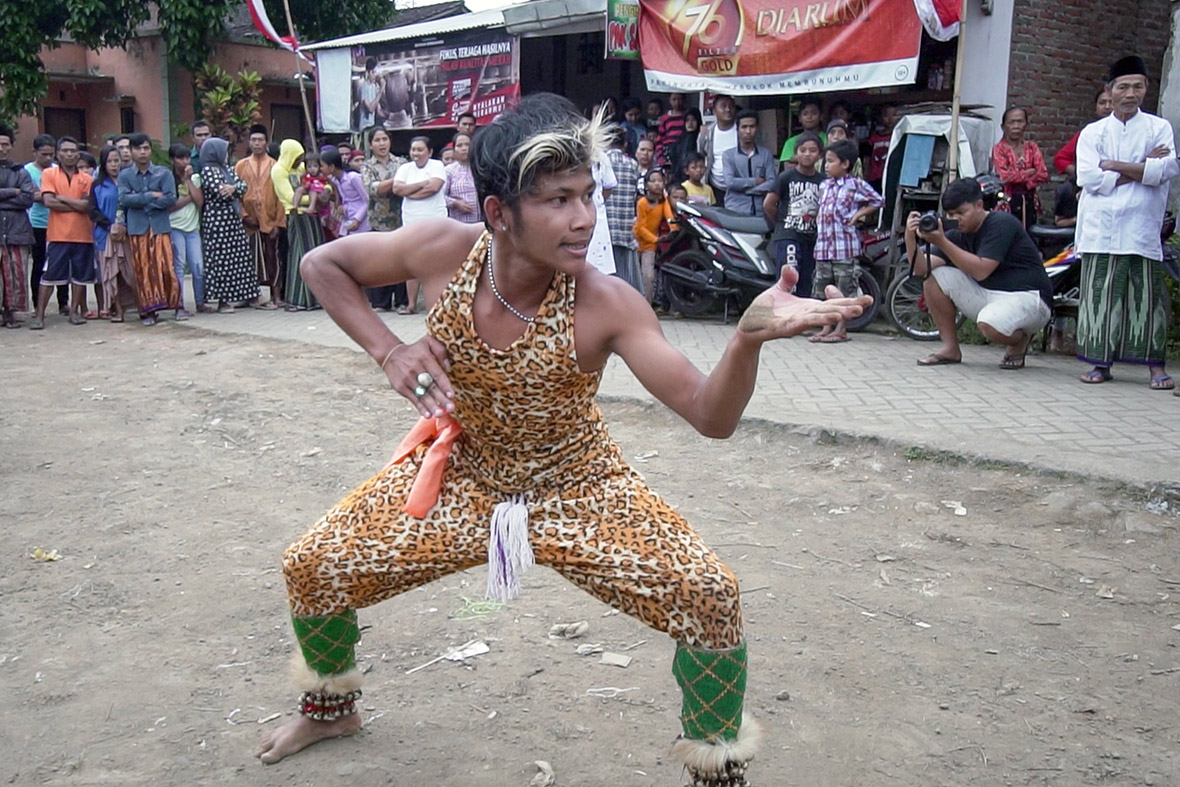
ABOVE: During the dance, the possessed take on animal-like traits in their dances.
The spectators became a little more rowdy as the ceremony continued, but the practitioners take charge to exorcise the spirits. The dancers are led, either by being drawn with masks or with incense. It seemed as though the spirits were settling down, but even in this there was action.
During one of the more intense moments of the trance dance, a man was being led into an alley with a green mask on the edge of the crowd. Crawling along the ground on all fours, he suddenly lashes out at the spectators, attacking them and causing a small fight. The possessed dancer takes a kick to the head but appears not to break from the trance.
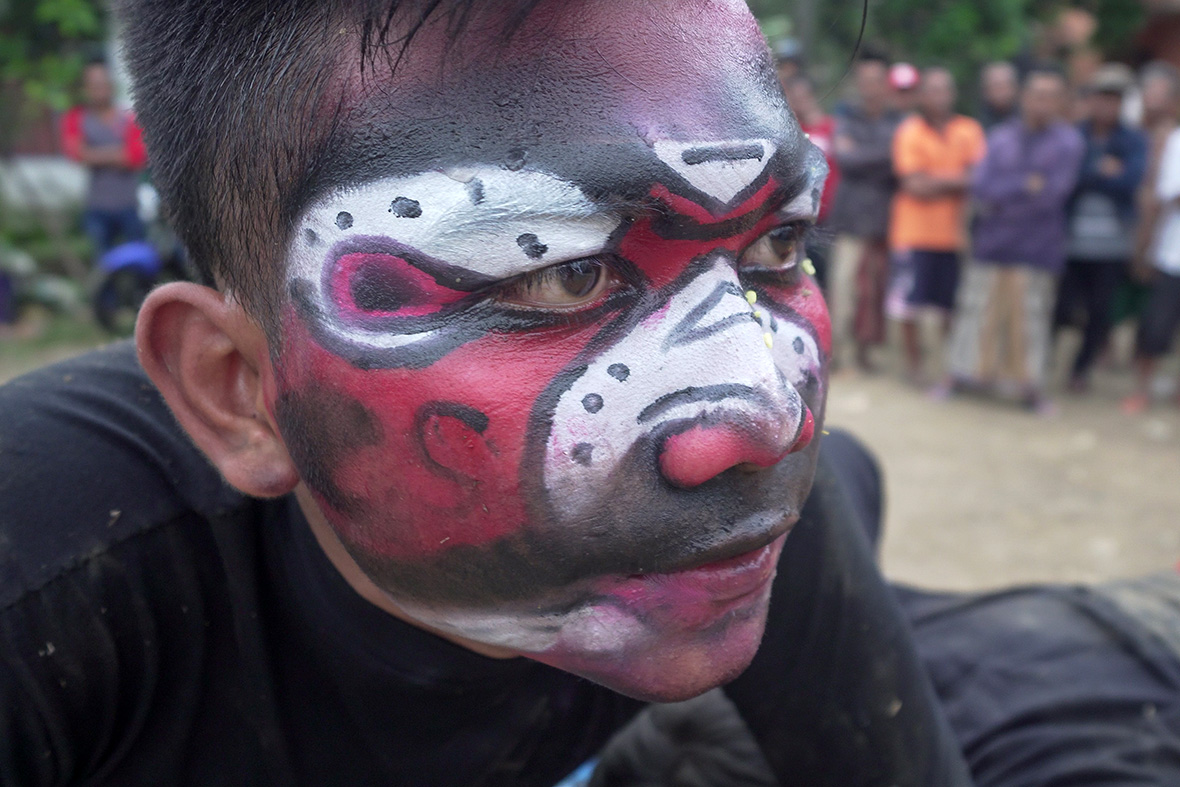
ABOVE: Close-up of a Jaranan dancer deep in a trance state.
The practitioner blows the spirit out of them, quite literally. The dancer becomes reverent to the spiritual leader’s incense set at a table, and in that stupor, the practitioner blows the spirit from the body. The dancer appears to be stunned and is helped to the ground where the remainder of the spirit is massaged away. No two spirits seemed the same.
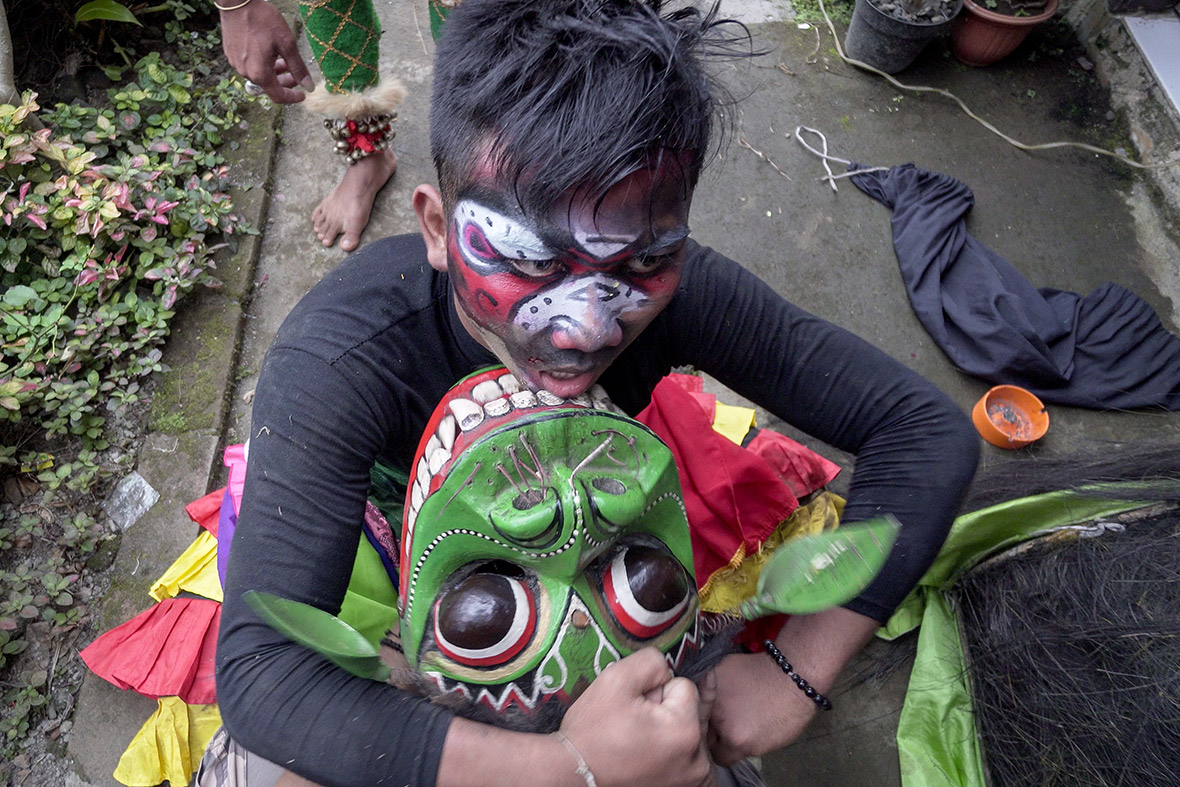
ABOVE: Masks help calm and lead the possessed dancers.
Only moments after the spirits are exorcised, the dancers are up, walking and talking as if nothing happened. After such an intense mentally and spiritually exhausting feat, the dancer shows no signs of having undergone any such tribulation.
“He feels the spiritual satisfaction, which means his heart is close to God,” Sarwo Edi says.
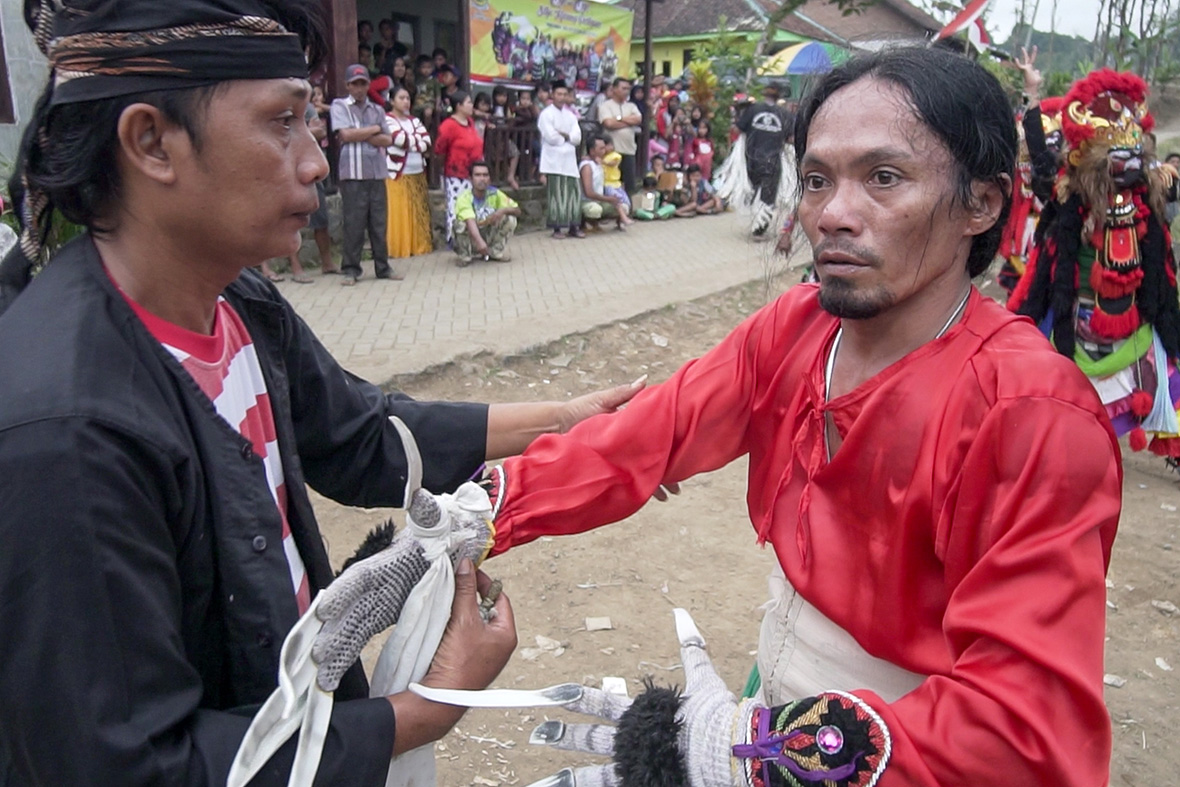
ABOVE: The moment after a practitioner “blows” the spirits from the dancer.
As a private experience, I was the instigator of this event, but it is the practitioners, numbering about three, that direct the ritual. This spiritual ceremony created a world more curious than the yellow, sulphur-spitting volcano from which I had just come at Ijen. It is a powerful performance that can dwarf the descent into a caldera.
As the ceremony ends, locals begin packing up the barong masks and gamelan instruments. For himself, Sarwo says, “There is pride for the practitioner where he can hold this long-aged tradition.”

